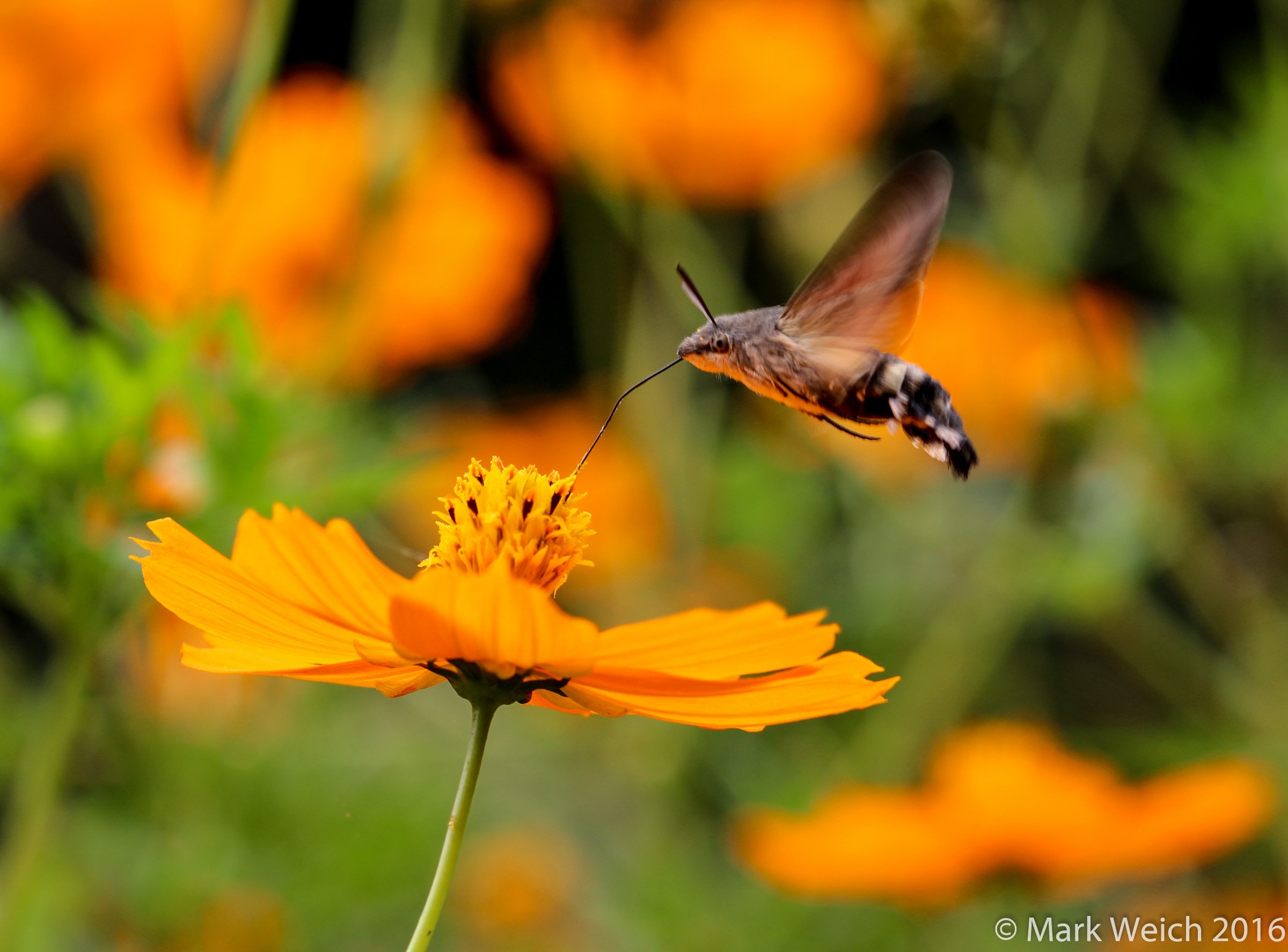
The Hummingbird Hawkmoth is a supreme example of convergent evolution, where unrelated species separately evolve similar traits to exploit similar environmental niches. It looks, flys and feeds in a manner very close to the hummingbird.
A very, very long proboscis rather than a beak. Looking at the first picture, the proboscis it at least as long as the moth's body, perhaps even a touch longer! That's the only really monstrous thing about these amazing moths, imagine being able to touch your toes with your tongue while standing up! Or drink from your friend's glass, across the table.
Even a tail of sorts to control its flight, while it hovers and feeds on the nectar of flowers, just like the hummingbird.
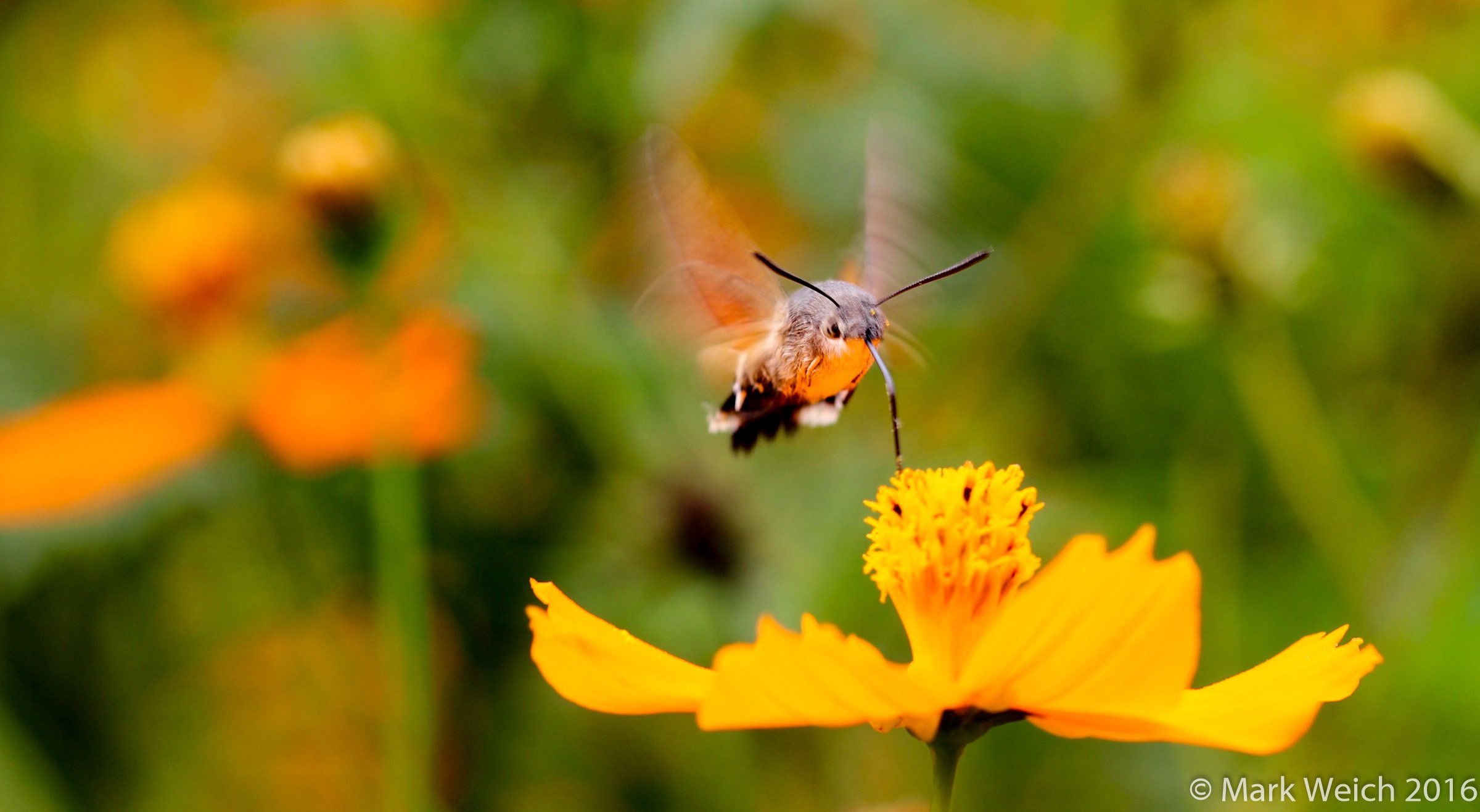
The Hummingbird Hawkmoth also has a pair of endearingly cute antenae!
Rapidly beating its wings to maintain position, they sound a bit like bees rather than the silent moths that are more famliar.

But where do these diurnal brightly coloured moths go at night, when some flowers close and the sounds of their wings would make them easy prey for bats?
They roost. Not as birds do in a confortable nest but rather they cling to branches superbly camouflaged as nothing more than a dead leaf.
I had the extreme fortune of witnessing one fly past the window, come back and perch on a branch of the roses outside the window as I happened to glance outside! Otherwise I would have never realized it was there.
Viewed in profile it's easy to discern the body shape of the moth:
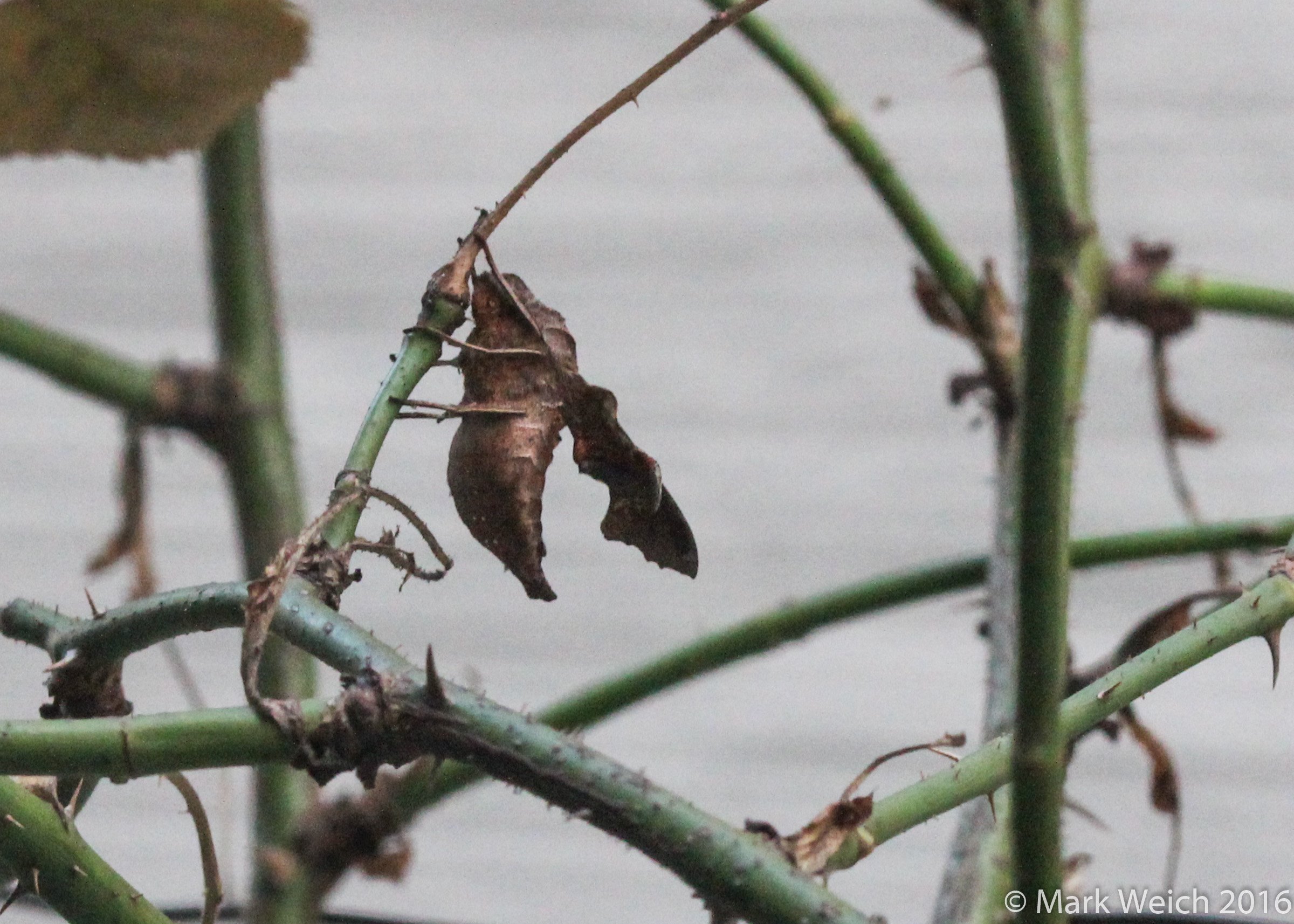
But from directly behind; it appears to be a crumpled leaf:
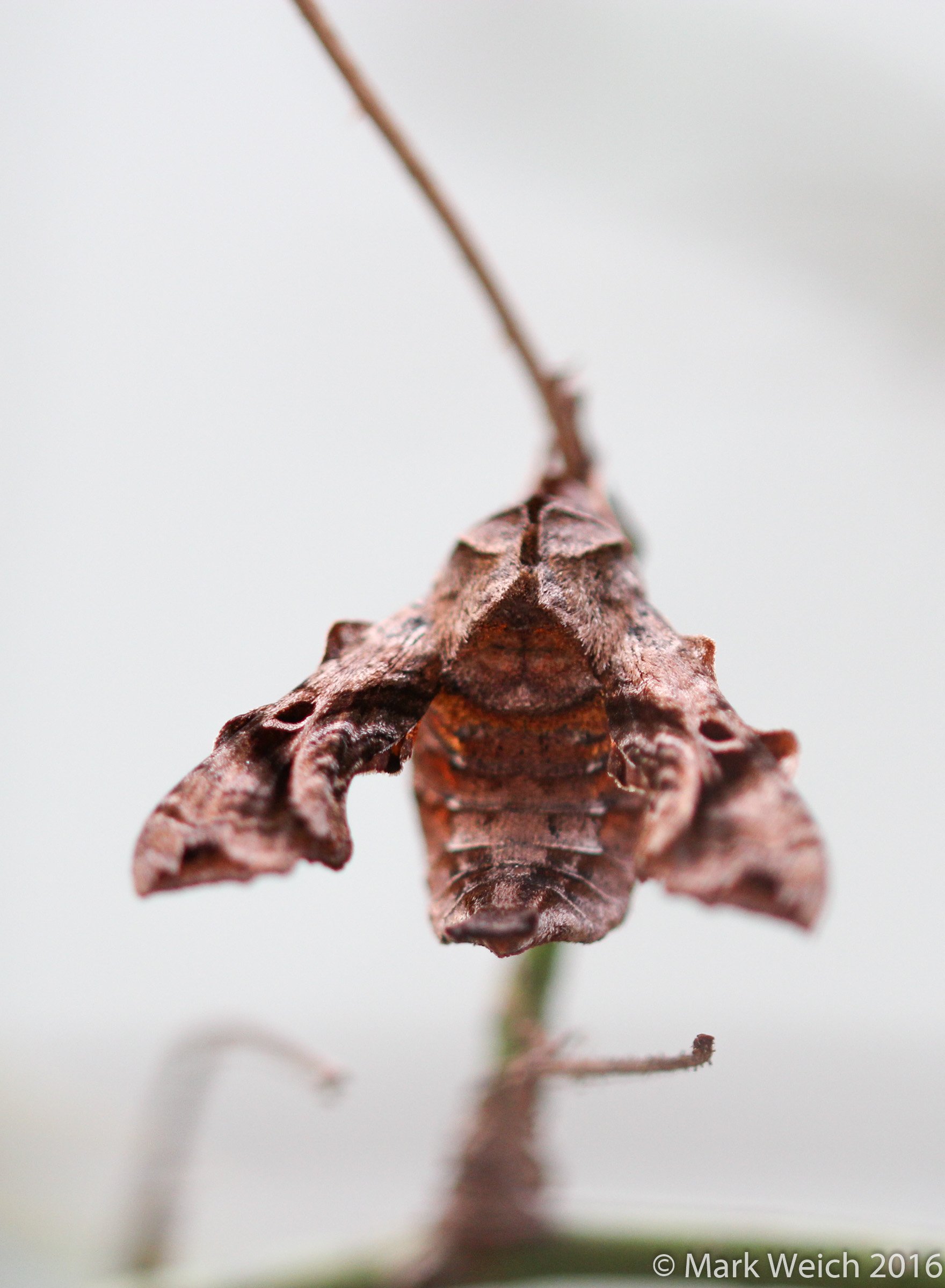
Going beyond merely having the same colouration and patterning of a leaf, the texture and structure is also replicated. The wings are crumpled and folded, hiding the bright colours that can be seen when flying, looking exactly as though they were descicated leaves. Ridges along the abdomen further enhance the illusion.
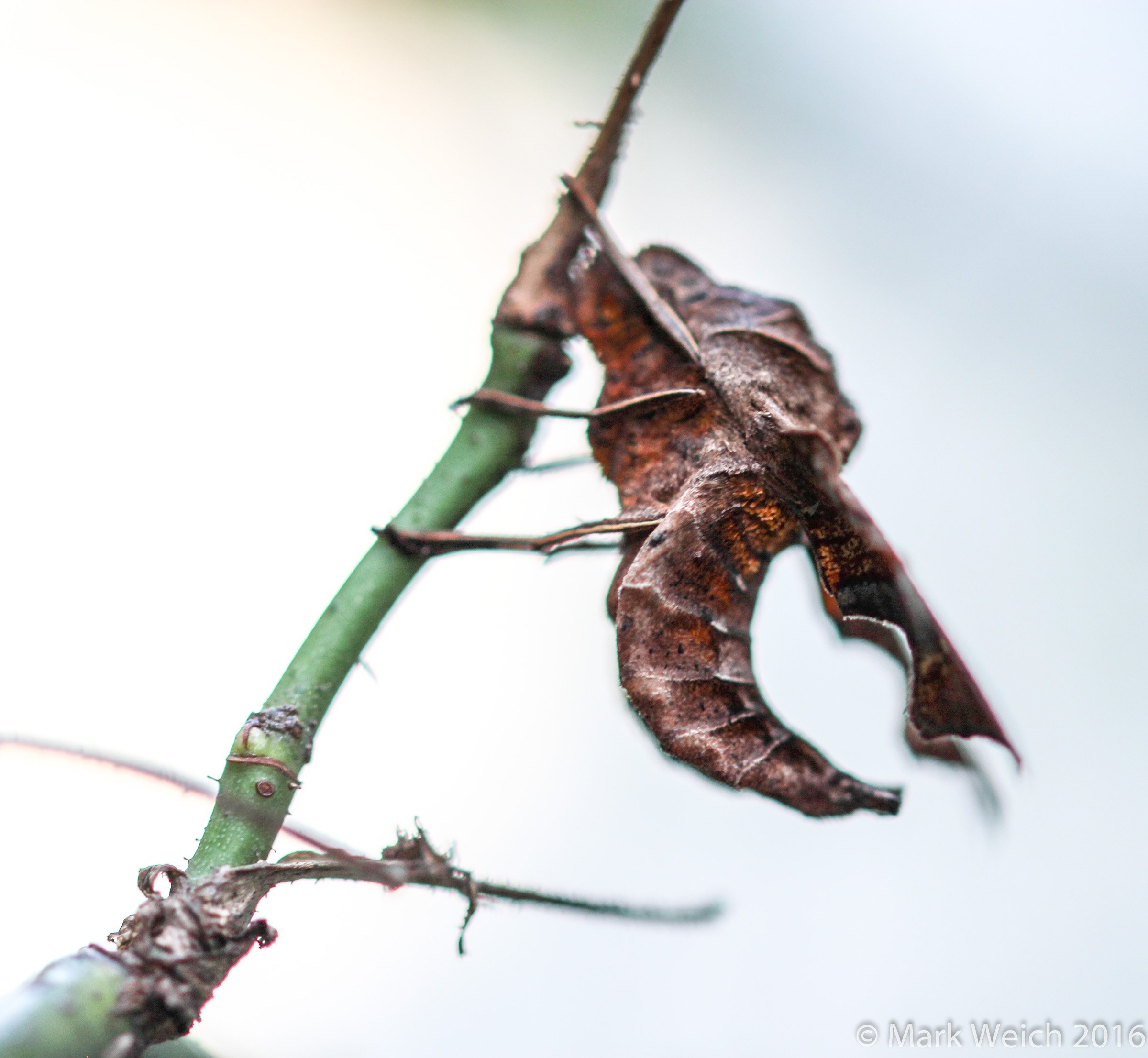
Looking closely, we can see that to minimize the round symetry of its eyes, they are hidden behind the first pair of legs (behind the small yellow patch on the face):
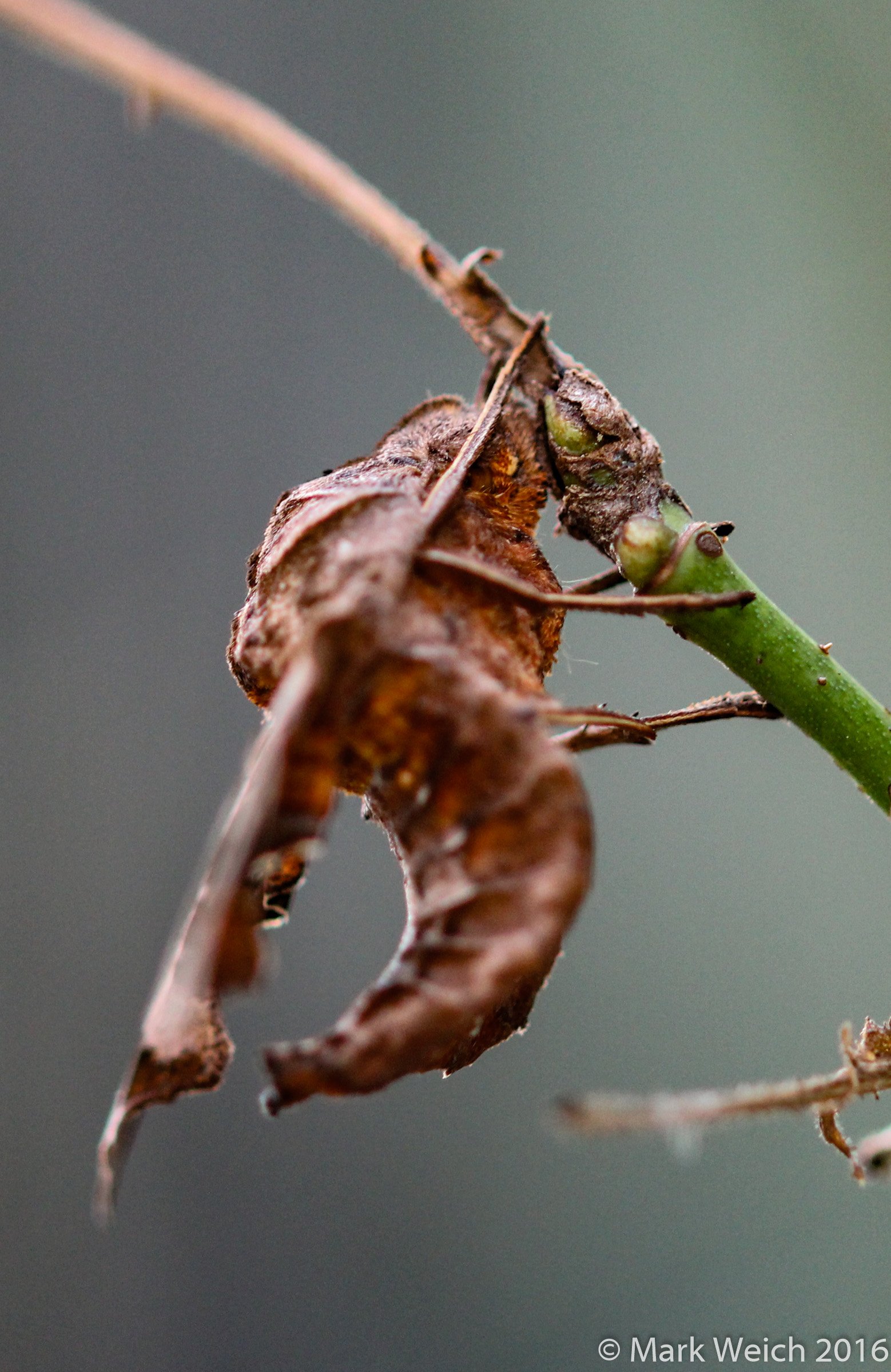
It stayed in this exact position throughout the night, though it was gone when I checked this morning. Perhaps, trying to beat the bees to the sweet nectar of the flowers at first light.
I'm constantly amazed at the incredible intricacy and beauty of the natural world and I hope to share a bit of what I have seen with everyone reading these posts.
Thank you!
#### Comments and feedback are always welcome.
Please upvote and follow to see the next installment in your feed!
Resteem if you think your followers would enjoy this post, thanks!
Also, if you like macro photography, check out some of the earlier posts in this series.
Little Monsters - Part I: Wolf Spiders
Little Monsters - Part II: Golden Orb Weaver
Little Monsters - Part III: Lynx Spiders!
Little Monsters - Part IV: Decorator Orb Weaver
Little Monsters - Part V: Black Back Paper Wasp
Little Monsters - Part VI: Dragonfly
Little Monsters - Part VII: Indian Fritallary
Little Monsters - Part VIII: Giant Japanese Hornet
Little Monsters - Part IX: Praying Mantis!
Little Monsters - Part X: Harlequin Ladybird!
Little Monsters - Part XI: Dragons!
Little Monsters - Part XII: Snails!
Little Monsters - Part XIII: Evil Weevils!
Little Monsters - Part XIV: Fantastic Phasmids!
Little Monsters - Part XV: To Bee or not to Bee?
Little Monsters - Part 16: Jumping Spiders!
Little Monsters - Part 17: Hawkmoth Caterpillars and Hawkmoths
Little Monsters - Part 18: Evil Doppelgangers - The Ant Mimic Spider
I maintain and reserve copyright on all of my photos.
